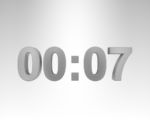Get Your Resume Noticed In Seven Seconds or Less was originally published on Ivy Exec.

You’ve been applying for jobs for what feels like forever, but you’re not getting anywhere: no interviews, let alone job offers.
A common reason you’re missing out on the interview round? Issues with your resume.
The average recruiter spends only seven seconds scanning a resume – if it makes it past the Applicant Tracking System (ATS) in the first place, so you’ve got to make yours count.
What, then, do you need to do to get your resume noticed – and fast?
Here are our top tips.
Decide which resume format is best for your work history.
There are three resume formats that serve different functions.
The first is the chronological resume, which lists your work history first before moving on to skills and education. This is a smart choice if you don’t have any gaps in your employment and/or if you’ve had a career in the same field throughout your career.
A functional resume focuses more on your skills and how you acquired them, rather than on your work history. This may be a more effective choice if you’re trying to enter a new field or have taken time off for any reason.
The combination resume format is a blend of chronological and functional formats, but you want to emphasize both your skills and your work history.
Add a compelling summary or headline that emphasizes who you want to be as a professional.
Before you list your work history or skills, you should start off your resume with either a headline or a summary (both of which accomplish the same thing).
A headline is a shorter version of a summary – usually one sentence – that briefly discusses who you are and where you would like to go in your career. A summary does the same thing in two or three sentences.
A powerful headline/summary is the best way to make a powerful first impression – and it’s the only part of your resume that indicates where you want to go in the future.
“The top of your resume should be a forward-leaning section that shares what you have to offer and who you want to be as a professional. It’s very different from the rest of the resume, which is backward-leaning and shows what you’ve accomplished thus far,” said Brie Reynolds, career development manager at FlexJobs.
Focus on metrics, not responsibilities.
One of the biggest mistakes job applicants make on resumes is focusing on tasks or responsibilities in past positions rather than on what they achieved in those positions.
Specifically, if you want to focus on your accomplishments in your past roles, focus most on your quantifiable results.
“This may be slightly difficult for non-revenue generating roles (e.g., people ops), but in most cases, your contributions should have directly impacted departmental or company objectives, and key results (OKRs), and that should be added to your profile. When listing responsibilities and achievements, I recommend having bullet points in an action-and-result format, supported by compelling quantitative data,” said Faith Kibria, who sits on the Forbes Human Resources Council.
Use the same keywords as the original job posting.
Another common mistake candidates make is using the same resume for every job application. This is problematic for one key reason: this template resume doesn’t use the same keywords from the job description.
First, you need to match the keywords to beat the Applicant Tracking System (ATS), an AI that checks applicants’ resumes to make sure they’re a good match for the company’s open position.
Since ATS don’t check for synonyms, you have to do the work to match the keywords exactly.
This matching isn’t just a tool for the AI, either; a tailored resume also helps recruiters see a match between your resume and their open position.
“[W]hen you apply for any job, you should pay attention to what the company has written about it — everything from the general description to the qualifications. The language they use has been intentionally crafted to highlight the skills and experiences they seek, so weave that language into your CV,” said Kristi DePaul for Harvard Business Review.
Tailor your resume to the type of position you’re looking for.
Are you not getting your resume noticed because it doesn’t connect to the position?
First, your resume should include a summary/headline at the top, followed by the relevant work history. In other words, you don’t want to include work experience that isn’t connected to the job to which you’re applying.
So, only include the positions you’ve held that are relevant to the job you’re applying for.
“If you’ve had three different careers in your lifetime, and you’re applying for a job that matches one of them, highlight that one. I’m not interested in your nursing career if you’re trying to be an editor,” said David Gaspin, a senior director of talent and human resources.
Also, you don’t want your work history to go too far back – positions you held 15 or more years ago can be cut.
Get Your Resume Noticed – in Seven Seconds or Less
If you’re resume isn’t landing you an interview, you might have a common issue. Perhaps it isn’t tailored to the job you’re applying, or you’ve included a work history that’s not relevant to the role at hand. Maybe you’re not including a compelling summary/headline, or are focusing on the job duties you’ve performed, rather than the successes you’ve had.
Remember, recruiters are not spending much time looking at your resume. How can you emphasize your fit for the position you’re applying for as efficiently as possible? If you’re not sure, consider a resume consultation with one of Ivy Exec’s Executive Career coaches!



